How and what is the best way to feed cichlids?
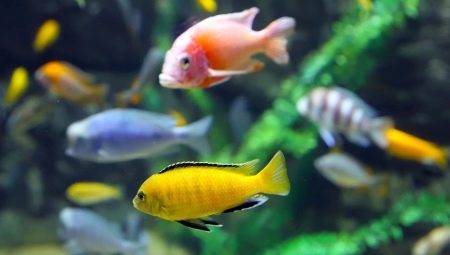
Aquarium fish of the cichlid family are very popular due to their relative unpretentiousness and variegated appearance. However, the health of these fish largely depends on a proper diet. Therefore, it is worth figuring out how and what is the best way to feed the cichlids.
Feeding principles
The cichloid family unites more than 1900 different species of fish, among which there are both omnivores and purely carnivorous or herbivores. That's why a single universal diet for all cichlids cannot exist in principle, and the diet must be selected exactly for the type of fish that you acquire.
You can quickly determine if a fish is carnivorous or herbivorous by examining its mouth.
If it is full of large and sharp teeth, you are in front of a pronounced predator, while cichlids that feed on plant foods usually have small teeth or are completely devoid of them. African cichlids are predominantly omnivorous, with the exception of purely herbivorous Malawian species. Most other cichlid species are carnivorous.
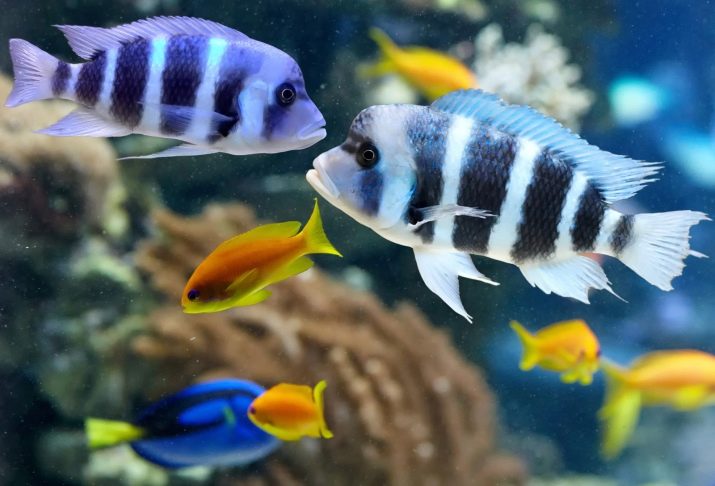
Among the species popular among Russian aquarists, predators are:
- akars;
- astronotuses;
- cichlazomas.

The most common herbivorous species are:
- astrothelapia;
- trophies;
- petrochromis.
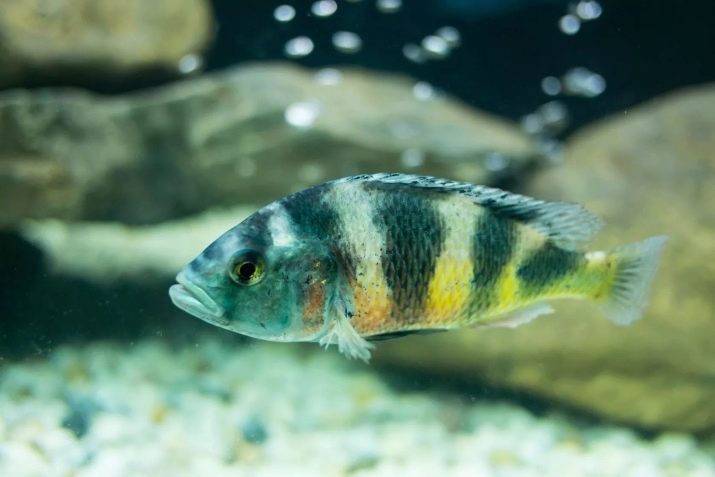
Some of these fish require the use of special foods. These include:
- dwarf cichlids;
- red parrots;
- discus;
- flower horny.
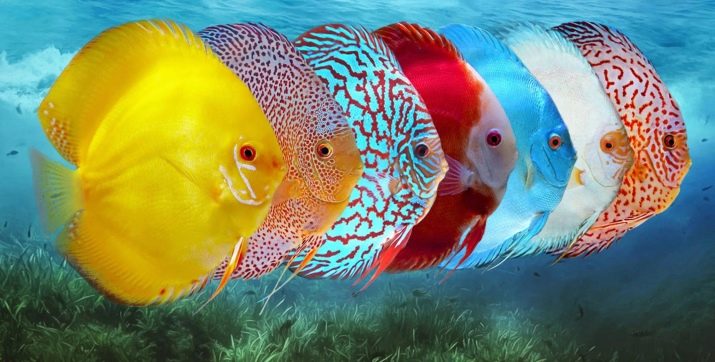
Having decided on what kind of food your pets need, you should also consider the following principles:
- it is better to keep carnivorous and herbivorous cichlids in different aquariums - this will help to organize their nutrition more correctly;
- fish do not have a sense of satiety, so it is important to correctly calculate the dose of food and in no case overfeed them;
- do not give fish products from your table;
- if possible, alternate dry and natural food;
- try to choose food with a high content of carotenoids - this will make your pets' color even brighter.
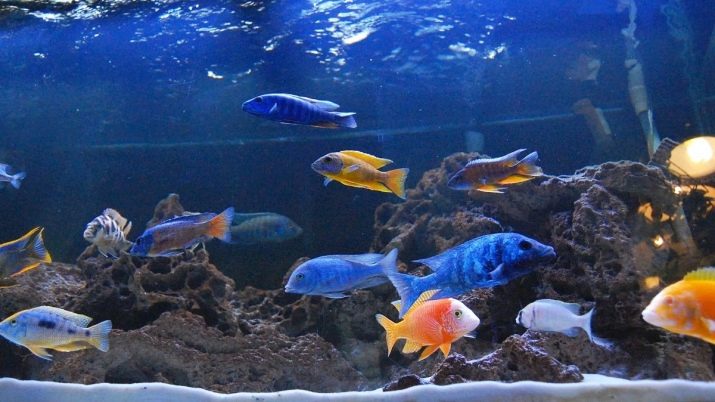
Types of feed
By origin, feed is:
- natural (living organisms for predators, algae and plankton for herbivorous fish);
- dry (ready-made feed from industrial manufacturers);
- additional - such food can be used as a top dressing and is usually prepared from common food products (vegetables for herbivorous fish, minced meat or boiled egg yolk for predators).
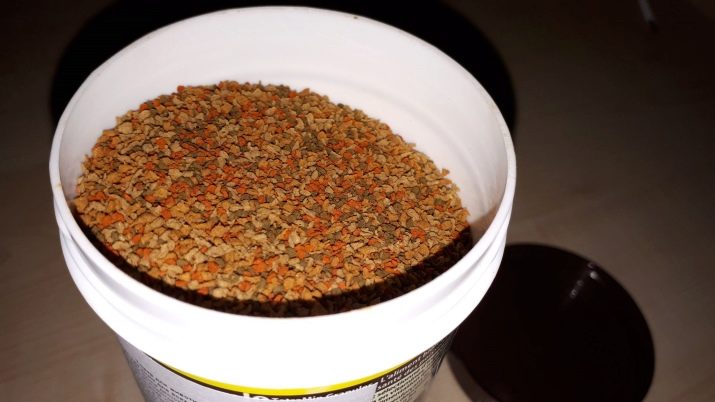
According to the format, dry food, in turn, is divided into several types.
- Sticks - designed for large fish. Usually they have a length of about 2 cm, they consist of crushed and mixed algae, fish products and protein-vitamin complexes. Recommended for omnivorous breeds.
- Granules - produced separately for carnivorous (usually red), herbivorous (green or green-brown) and omnivorous (red-brown granules) fish.
- Flakes - for cichlids-predators, they are red and consist of meat, for lovers of plant food - they are green and consist of spirulina, beets and carrots, but for omnivorous breeds, yellow flakes, which include algae and meat, are suitable, and vegetables.
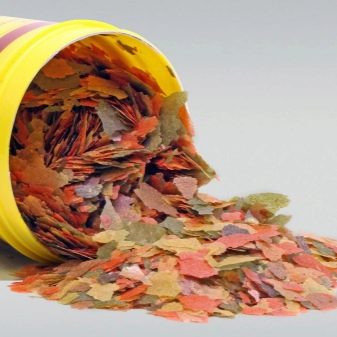
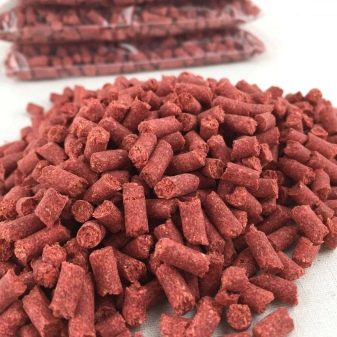
By location in the aquarium, products are divided into:
- floating - designed for fish that prefer the upper layers of water;
- middle layer - the density of these feeds is selected so that they "hang" in the water approximately in the middle between the bottom and the surface of the water;
- bottom - they should be given to fish, predominantly located closer to the bottom of the aquarium.

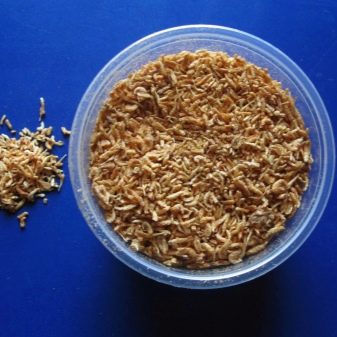
Popular dry diets
The dominant position in the Russian market is occupied by the German company Tetra.
It produces a separate line of food specially designed for fish of the cichlid family, which is called Tetra Cichlid.
You will find many options in this line.
- Granules - medium-sized pelleted food for medium to large breeds, best suited for omnivorous fish. The pellets are divided into green (contain algae) and red (contain meat).
- Sticks - sticks floating on the surface. Suitable only for large (from 15 cm) omnivorous species, since each stick contains both plant and animal components.
- Flakes - flakes floating on the surface. Red flakes are for predators, green flakes are for herbivorous breeds, omnivorous cichlids can be sprinkled with both types. The flakes work equally well for pets of all sizes.
- Algae - middle layer granules with a high content of spirulina for all herbivorous and omnivorous species, regardless of size.
- Red parrot - special food for red parrots.
- Color - small granules with a high protein content floating in the middle layer of water, designed for herbivorous and omnivorous breeds of any size.
- Pro - an analogue of Color granules with an increased amount of vitamins, suitable for all types of fish.

And also the products of the German company Sera are quite popular:
- Cichlids sticks - sticks for large rocks that prefer to stay near the surface of the water;
- Granugreen - a grounded diet for small herbivorous and omnivorous fish living in the middle layer;
- Green XL - granules floating on the water surface for large herbivorous breeds;
- Granured - pelleted food for small predators;
- Red XL - surface granules for large predators;
- Arowana - floating pellets for especially large predatory breeds;
- Red parrot - special food for red parrots.
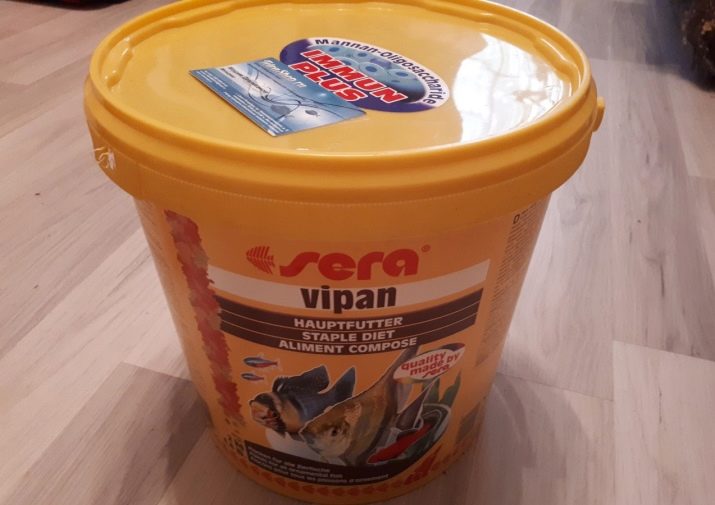
Live food
Most carnivorous and omnivorous breeds digest well such types of live food:
- crustaceans (daphnia, brine shrimp nauplii);
- bloodworm;
- core;
- worms (earthworm, hookworm and tubifex).
They are all sold in pet stores.... You can catch earthworms and bloodworms yourself. Daphnia and other crustaceans can be grown independently in an impromptu incubator of 2 plastic bottles with saline solution (3 tablespoons of salt per 2 liters of warm water).

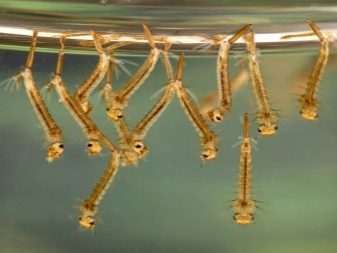
How to feed the fry?
The diet of young fish of all species is often very different from that of adults. Therefore, it is advisable to immediately plant them in a separate aquarium. Crustaceans (brine shrimp nauplii) and nematodes have proven themselves well as a starter diet for predators. After 2 weeks, you can start feeding with finely chopped tubule, and after a few more weeks add bloodworms. Yolks and minced meat can be added as additional feeding.
It is easier to understand that fry are full than for adult fish - just look at the yellow membrane on their abdomen. If it is full, the baby is full and does not require additional feeding.
If you are going to use crustaceans for feeding fry, then keep in mind that live crustaceans can be aggressive and attack your pets. Therefore, in the early stages of development, it is worth either using dried crustaceans, or using crustacean eggs rather than adults.

Feeding Schedule
General principle, which, if possible, should be followed when scheduling feeding - better less often, but less. At the same time, you can feed large fish 1-2 times a day, but it is better to feed fry on a schedule that includes at least three feedings a day.
Note that even adults of the Callochromis, Enantiopus, Petrochromis Tropheus and Xenotilapia breeds feel better when fed 3-4 times a day.
Anyway the interval between feedings of adult cichlids should be at least 4 hours.

Why does fish have no appetite?
If the cichlids did not eat a small amount of food, and he lay down on the bottom, this is not necessarily evidence of a disease, perhaps they were just full. Anyway do not let the food stagnate in the aquarium - you need to remove it from the bottom with a net.
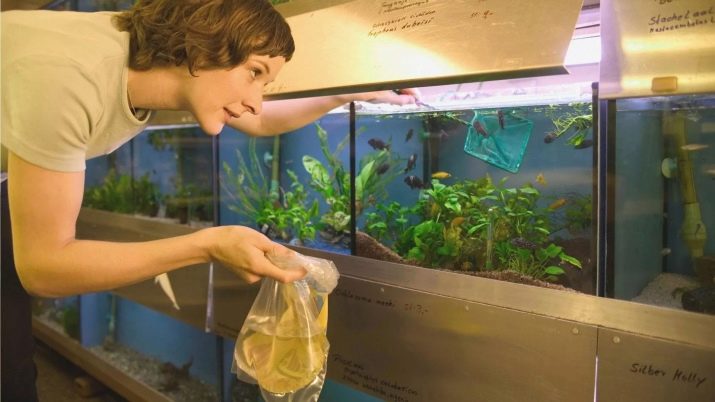
Fasting for several days will be an alarming signal.
The main reasons why cichlids do not eat:
- bearing offspring - cichlids carry fry in the mouth, during this period the female stops feeding;
- disease - it is worth carefully examining the pet for other alarming symptoms;
- adaptation to new feed - then you need to wait, and if the fish does not start eating new food, you need to return to the old diet;
- unsuitable feed - then you need to change the food to a better one as soon as possible;
- bad conditions - wrong composition of water or inappropriate temperature conditions;
- stress from a new aquarium or water change - in such cases, the appetite disappears for 1-2 days and is restored by itself, therefore, it is better not to feed the fish on the first day after moving or changing the water.
If loss of appetite helps you identify sick fish, then you need to immediately transplant it into a separate aquarium.
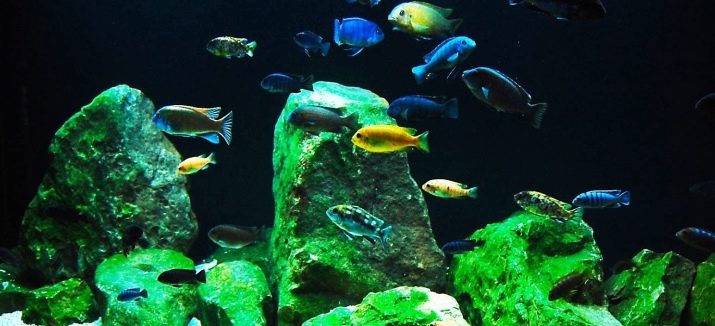
Signs of a poor diet
It is also possible to quickly understand that fish food is not suitable by observing their secretions. If their excrement is colored dark (from black to red, depending on the species), then the diet is selected correctly.
If the discharge of fish is colored in light colors, it means that their digestive system is not working properly, and it is worth revising their diet (and, possibly, taking preventive measures).

When undernourished, cichlids gradually develop the following symptoms:
- lethargy;
- exhaustion;
- sunken belly, back and sides;
- the pursuit of solitude.
Overfeeding usually presents with the following symptoms:
- decreased mobility;
- roundness and convexity of the belly and sides.
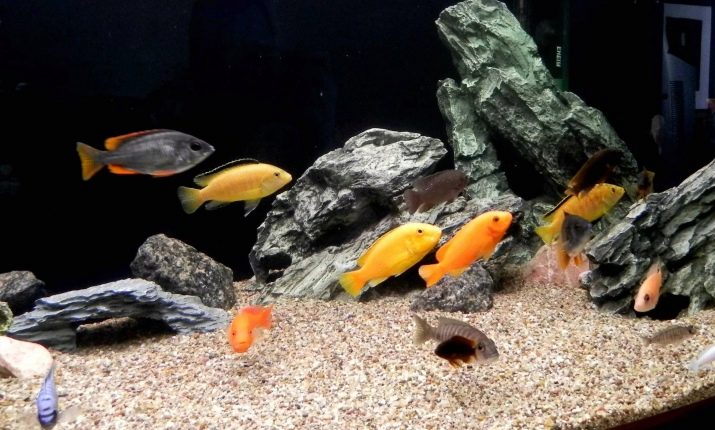
In the next video, you can learn about the diet of Malawian cichlids, as well as watch their feeding.








